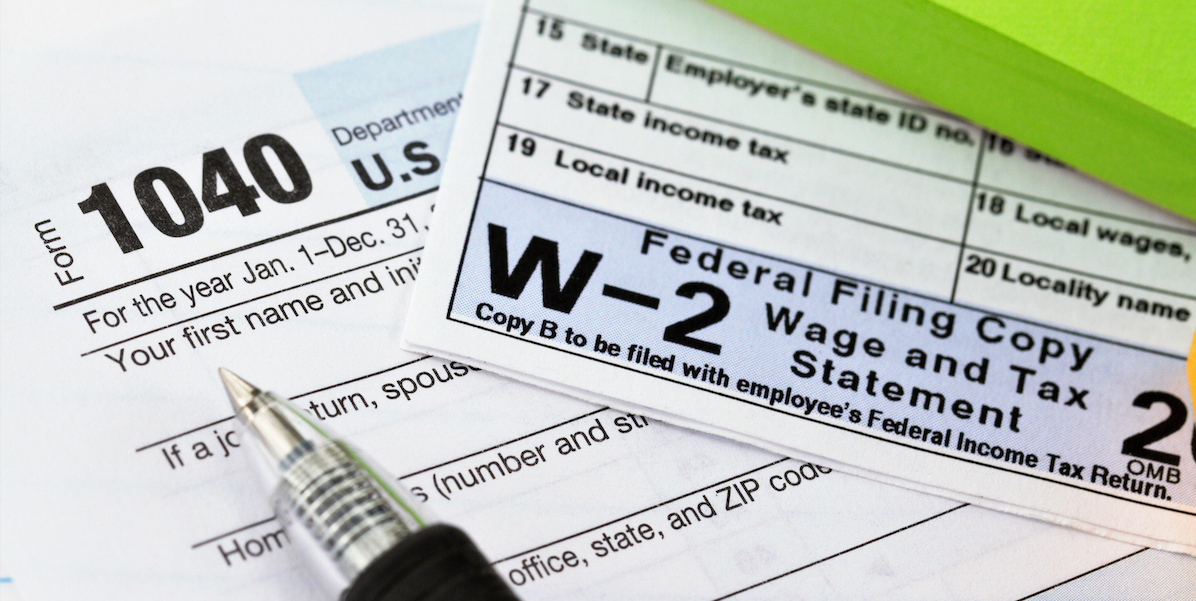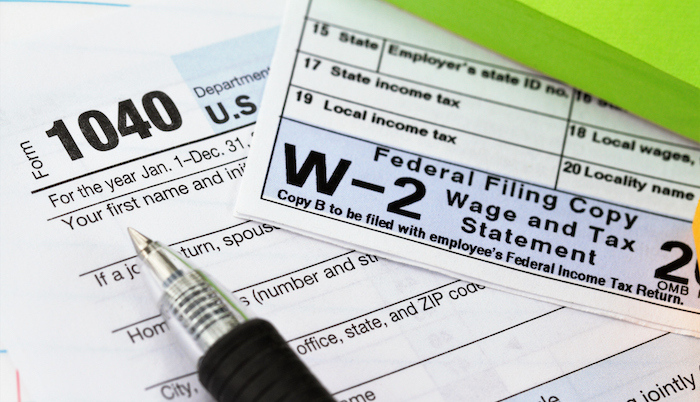Service members receive their W-2 forms from DFAS by late January each year, accessible via the myPay system or mailed to their address. If misplaced, they can retrieve or replace them through myPay, DFAS contact points, or the eBenefits portal.


A W-2 form, also known as a Wage and Tax Statement, is an essential document for filing federal and state income tax returns. It summarizes an employee's annual earnings and the taxes withheld from their paychecks over the course of a tax year. Employers must distribute W-2s by January 31st of every year, prior to tax season.
Just like everyone else, service members receive a yearly W-2 form. However, due to deployment, Permanent Change of Station (PCS) orders or separation from service, a service member may lose track of their W-2.
Let’s explore what to do if you’ve misplaced your military W-2 and how to use it when filing your income taxes.
When Do Military W-2s Come Out?
W-2s are typically issued to active-duty, reserve and National Guard members by the end of January each year. The specific date can vary slightly from year to year, but they are usually available to military personnel by the last day of January.
Below is a breakdown of the military W-2s and their release dates.
2024-2025 Wage and Tax Statement Schedule
| Document Type | Available on myPay |
|---|---|
| Navy Student Loan Repayment Program (SLRP) W-2 | 1/7/2025 |
| Army Non-Appropriated Fund (NAF) Civilian W-2 | 1/7/2025 |
| Reserve Army, Navy, Air Force, Space Force W-2 | 1/8/2025 |
| Active/Reserve Marine Corps W-2 | 1/17/2025 |
| Active Army, Navy, Air Force, Space Force W-2 | 1/17/2025 |
| Army Student Loan Repayment Program (SLRP) W-2 | 1/21/2025 |
| Civilian (DoD/Non-DoD) W-2 | 1/24/2025 |
| Travel/Miscellaneous W-2 | 1/31/2025 |
How to Get Your Military W-2
The Defense Finance and Accounting Service (DFAS) is the department responsible for processing and distributing W-2 forms to military personnel. Active service members can access their military W-2 forms electronically through the myPay system, a secure online portal provided by DFAS.
The platform myPay is the primary method for dispersing W-2s and will be posted online before being mailed to you. If you haven’t opted into online distribution, you may receive paper copies of your W-2s by mail. In those circumstances, the documents will be sent to the address on record.
If you experience further issues accessing or receiving your W-2, don’t hesitate to reach out to the myPay helpdesk, the DFAS website or your unit’s payroll office. Prepare identifying financial and service information in advance, such as your Social Security number or dates of service, to help streamline the process.
Getting a Military W-2 After Separation
Using the same methods as active duty service members, Veterans who have separated from the military can collect their W-2 forms for the tax year during which they were in active service.
If the Veteran had previously set up a myPay account during their military service, they can continue to access their W-2 forms electronically through the service. The W-2 will also be sent to the mailing address that DFAS has on file if the Veteran has opted in. If you didn't receive your W-2 or need a replacement after separation, contact DFAS.
How to Replace a Military W-2
If you’ve lost your W-2, you can access and download it electronically through the myPay system anytime. If you haven’t used MyPay before, you’ll need to set up an account. If you can't access MyPay or prefer another method, you can request your W-2 by contacting the DFAS by phone or mail. You may also use the eBenefits portal to access your W-2 forms.
To ensure you’ll have access to your W-2, take steps to store your myPay login in a secure location. Within myPay, make sure personal contact information, including mailing addresses, email addresses and phone numbers are up to date. Especially if you expect to move during the beginning of the year, it’s crucial to check your address information and modify it if necessary.
Whether you receive your W-2 digitally or physically, it’s a good idea to make copies of it. Digital files can be stored on a stable hard drive or server, while paper copies can be filed the old-fashioned way.
Is Military Salary Taxed?
Yes, just like civilians, the salary of service members is considered taxable income. Service members are subject to federal income tax and may also be required to pay state income taxes depending on their duty station and legal residence.
However, the amount of tax each service member is required to pay depends on a variety of factors, such as their income level, marital status and the number of dependents they have. They may also be eligible for exclusions and exemptions that civilians are not.
What is the Deadline for Service Members to File Taxes?
The deadline for filing federal income tax returns is the same for most civilians and service members, landing on April 15th of each year. If April 15th falls on a weekend or a holiday, the deadline may be extended to the next business day. State income tax deadlines can vary by state, so service members should also be aware of the deadlines for filing state tax returns in their state of residence or duty station, if applicable.
Filing by the deadline helps avoid potential penalties and interest charges for late filing. Of course, the nature of active duty military service may complicate the tax filing process. Luckily, service members stationed overseas or in combat zones may have special extensions or considerations for filing their taxes.
Active Duty Military Tax Extensions
Service members who are deployed to designated combat zones may qualify for an automatic extension of the filing deadline. This usually grants them the option to postpone both the filing and payment of their federal income taxes until 180 days after their departure from the combat zone. During this extension period, they generally won't face penalties or interest on taxes due.
In addition to combat zones, there are certain hazardous duty areas where service members may receive a filing extension. The extension period and specific details may vary, so it's important to consult IRS guidelines and the Department of Defense (DoD) for the latest information.
Service members stationed overseas may qualify for the Foreign Earned Income Exclusion, which allows them to exclude a portion of their foreign-earned income from U.S. taxation. This exclusion can significantly reduce their taxable income.
Some states provide similar extensions or special considerations. Service members should check with their state's tax authorities or a tax professional to understand any state-specific rules.
How We Maintain Content Accuracy
Veterans United often cites authoritative third-party sources to provide context, verify claims, and ensure accuracy in our content. Our commitment to delivering clear, factual, and unbiased information guides every piece we publish. Learn more about our editorial standards and how we work to serve Veterans and military families with trust and transparency.
Related Posts
-
 What Not to Do When Buying a House and Mistakes to AvoidDiscover key mistakes to avoid before buying a home, ensuring a smoother, more informed process. Here's four things to not do when purchasing a house.
What Not to Do When Buying a House and Mistakes to AvoidDiscover key mistakes to avoid before buying a home, ensuring a smoother, more informed process. Here's four things to not do when purchasing a house. -
 2020 Veterans Day Discounts, Deals, and GiveawaysVeterans Day 2020 will be on Wednesday, November 11th, 2020. Check out this full list of deals for veterans, service members and their families.
2020 Veterans Day Discounts, Deals, and GiveawaysVeterans Day 2020 will be on Wednesday, November 11th, 2020. Check out this full list of deals for veterans, service members and their families.

